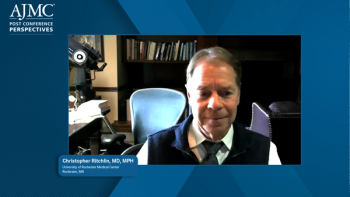
From ATS 2025: Analysis of Data Supporting PDE4 Inhibition in IPF
Panelists discuss recent phase 3 trial results of a novel oral agent for idiopathic pulmonary fibrosis (IPF) and progressive pulmonary fibrosis (PPF), highlighting its ability to significantly reduce lung function decline and mortality—even when added to existing antifibrotic therapies—while maintaining a favorable safety and tolerability profile.
Episodes in this series

Recent clinical trial data on a novel oral agent for IPF and PPF have generated significant excitement in the respiratory field. Two large, parallel phase 3 studies—the IPF trial and the PPF trial—enrolled over 2300 patients across 45 countries, making these some of the largest studies to date. Both trials tested the drug at doses of 40 mg and 80 mg twice daily, assessing its effect on lung function over 52 weeks. Importantly, these studies demonstrated positive results, meeting their primary end points by significantly reducing the rate of forced vital capacity decline compared with placebo in both IPF and PPF populations.
What makes these findings particularly impactful is the context in which the drug demonstrated efficacy. Around 75% of the patients in the IPF trial were already receiving standard FDA-approved antifibrotic therapies, yet the new agent showed benefits on top of these treatments without significant drug-drug interactions. Beyond lung function preservation, secondary end points revealed meaningful clinical improvements, including a statistically significant delay in the need for supplemental oxygen among treated patients. Perhaps most striking was the observed reduction in mortality in the treatment arms, marking the first time a survival benefit has been documented in large-scale pulmonary fibrosis studies.
Safety and tolerability were also favorable, with adverse effects being mostly mild and manageable. Although some patients experienced mild gastrointestinal symptoms like diarrhea, this did not limit the drug’s overall tolerability or use in clinical practice. This oral agent thus offers a promising addition to the current treatment landscape, with the potential for use both as monotherapy and in combination with existing antifibrotics. Its demonstrated efficacy, safety profile, and potential survival benefit provide hope for improved patient outcomes in these challenging fibrotic lung diseases.
Newsletter
Stay ahead of policy, cost, and value—subscribe to AJMC for expert insights at the intersection of clinical care and health economics.












































